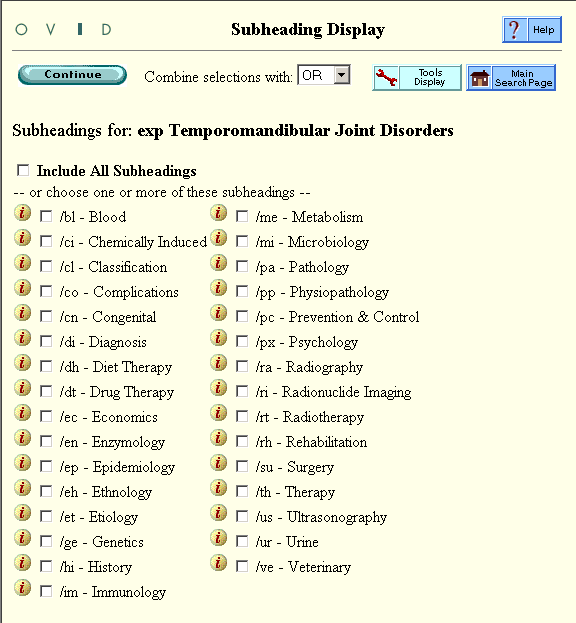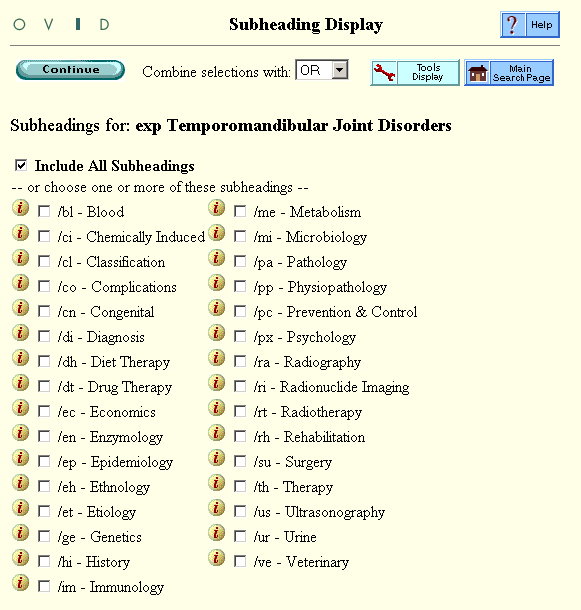When an indexer assigns a Subject Heading, she often (but not always) also assigns a
"subheading", because the article is about a particular aspect
of a topic. For example, here's how a few articles about TMJ disorders were indexed:
- ARTICLE: "Diagnosing TMJ internal derangement and osteoarthritis with
magnetic resonance imaging"
INDEXING: Temporomandibular Joint Disorders / di [Diagnosis]
The indexer assigned the subheading Diagnosis since the article is about this particular aspect of TMJ disorders.
- ARTICLE: "Pathology of the temporomandibular joint and its treatment in the first half of the 19th century"
INDEXING: Temporomandibular Joint Disorders / hi [History]
The subheading History was assigned since the article was about this aspect of TMJ disorders.
- ARTICLE: "An appraisal of the quality of referral letters from general dental
practitioners to a temporomandibular disorder clinic"
INDEXING: Temporomandibular Joint Disorders
The indexer assigned NO subheading because the article was not about a particular aspect of TMJ disorders.
In the last section, we searched for articles on TMJ disorders, and after exploding the Subject Heading Temporomandibular
Joint Disorders, Ovid asked whether we wanted to include all subheadings:

We said yes by checking the "Include All" box:

This is the best approach if you want all the articles on TMJ disorders. You'll get articles where
Temporomandibular Joint Disorders has no subheading , and articles where it has any
particular subheading.
But we could have checked one (or more) subheadings, instead.


